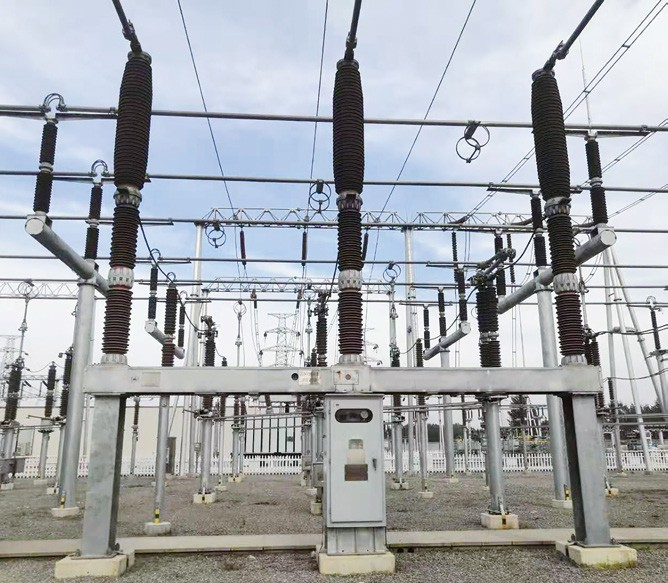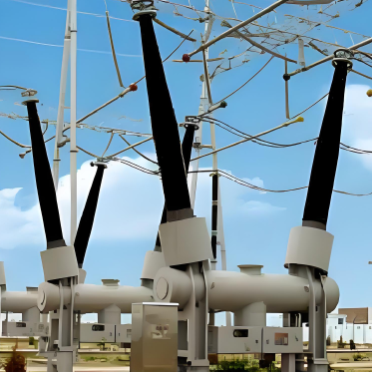VZIMAN Company SF6 Circuit Breaker Solutions for Renewable Energy Grid Integration

1. Current Challenges in Renewable Energy Grid Integration
1.1 Grid Frequency Fluctuations and Stability Issues
The intermittency and variability of renewable energy sources (e.g., wind and solar) lead to frequent grid frequency changes. Traditional circuit breakers struggle to respond rapidly to such dynamic loads, potentially causing equipment damage or regional blackouts. For instance, during sudden drops in wind power or abrupt solar output fluctuations, the grid must isolate faults within milliseconds, demanding ultra-high-speed and precise circuit breaker operation.
1.2 Increased Demand for Equipment Reliability
Renewable energy plants are often located in remote areas (e.g., deserts, offshore), where extreme conditions (high humidity, salt spray, temperature swings) accelerate equipment aging. Conventional circuit breakers fail to meet long-term reliability requirements due to limited mechanical lifespan and insulation performance. Additionally, frequent switching operations (e.g., solar inverter startups/shutdowns) at grid connection points exacerbate contact wear, raising failure risks.
1.3 Environmental Compliance Pressures
Although SF6 gas offers excellent arc-quenching properties, its Global Warming Potential (GWP) of 23,500 has led to regulatory restrictions in regions like the EU. Renewable projects increasingly require ESG (Environmental, Social, Governance) certification, pressuring traditional SF6 circuit breakers to compete with eco-friendly alternatives.
1.4 Gaps in Smart Grid Integration and Control
Renewable integration necessitates coordination with energy storage systems and flexible transmission devices. However, traditional circuit breakers lack real-time monitoring and remote control capabilities, hindering their compatibility with smart grid digital management systems.
2. VZIMAN's SF6 Circuit Breaker Solutions
To address these challenges, VZIMAN introduces its "HV" Series Smart SF6 Circuit Breakers, integrating four core technologies:
2.1 Dynamic Frequency-Adaptive Arc Quenching Technology
Utilizing magneto-hydrodynamic (MHD)-driven arc-extinguishing chambers, this technology dynamically adjusts SF6 gas pressure and arc paths by monitoring grid frequency changes (±0.1Hz precision). It reduces arc quenching time to under 5ms—40% faster than traditional solutions—effectively preventing cascading failures caused by renewable energy fluctuations.
2.2 Eco-Friendly Hybrid Gas Formula
A proprietary SF6/Novec 1230 gas blend (GWP < 100) retains 90% of the original arc-quenching performance while reducing leakage rates to 0.3%/year. Paired with a fully enclosed gas recovery system, it ensures zero emissions during maintenance, complying with EU F-Gas regulations.
2.3 Modular Redundancy Design
Featuring plug-and-play contact modules and dual-spring operating mechanisms, the design enables online replacement of worn components, cutting maintenance time by 70%. Covering voltage classes from 72.5kV to 550kV, the product adapts flexibly to scenarios like onshore wind and offshore solar farms by adding/removing arc-quenching units.
2.4 Integrated Digital O&M Platform
Equipped with multi-parameter sensors (temperature, pressure, partial discharge), data is uploaded via edge computing gateways to VZIMAN’s Smart Energy Cloud Platform. This enables health prediction and self-diagnosis, with AI algorithms providing 14-day advance fault warnings, reducing O&M costs by 35%.
3. Achievable Outcomes
3.1 Enhanced Grid Safety
In field tests at a 2GW wind farm in Inner Mongolia, the "HV" series successfully blocked four frequency over-limit events caused by turbine disconnections, achieving a grid equivalent availability rate of 99.998%.
3.2 Reduced Lifecycle Costs
The hybrid gas solution lowers carbon tax expenses by 85%, while modular design extends equipment lifespan to 30 years, reducing Total Cost of Ownership (TCO) by 22%.
3.3 Accelerated Green Certification
The product has obtained DNV GL Zero-Carbon Equipment Certification.
3.4 Smart Grid Compatibility
In a virtual power plant pilot, 200 units achieved millisecond-level coordination with energy storage systems, maintaining peak-shaving response errors below 1%.













